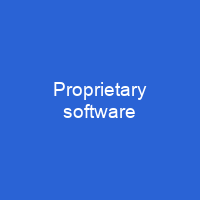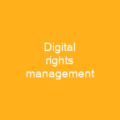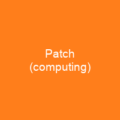Proprietary software is computer software for which the publisher or another person reserves some rights from licensees to use, modify, share modifications, or share the software. Most of the software is covered by copyright which, along with contract law, patents, and trade secrets, provides legal basis for its owner to establish exclusive rights. Vendors typically distribute proprietary software in compiled form, usually the machine language understood by the computer’s central processing unit.
About Proprietary software in brief

The source code for some applications, such as Shell-based email client Shell, is available for redistribution but not for modification, for example, but not redistribution, but for text-based client Shell. In 1983, binary software became copyrightable in the U.S. as well by the Apple vs. Franklin law decision, before which only source code was copyrightable. In February 1983 IBM adopted an \”object-code-only\” model for a growing list of their software and stopped shipping much of the sourcecode, even to licenseers. This scheme is often referred to as closed source. Occasionally, software is made available with fewer restrictions on licensing or source-code access; such software is known as \”free\” or \”open-source. The owner of proprietary software exercises certain exclusive rights over the software, The owner can restrict use, inspection of source code, modification, and redistribution, and prohibit the user from installing the software on extra computers. The user may agree to this contract in writing, interactively on screen, or by opening the box containing the software. License agreements are usually not negotiable. Vendors may also distribute versions that remove particular features, or versions which allow only certain fields of endeavor, like non-commercial, educational, or non-profit use.
You want to know more about Proprietary software?
This page is based on the article Proprietary software published in Wikipedia (as of Jan. 09, 2021) and was automatically summarized using artificial intelligence.







